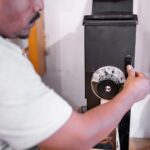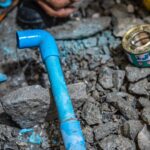Understanding recuperation and its benefits
Recuperation is a process that recovers heat from exhaust air to warm incoming fresh air. This technology significantly reduces energy consumption in buildings. Recuperation systems can save up to 90% of heat that would otherwise be lost. These systems are essential for maintaining good indoor air quality while minimizing energy costs.
Modern recuperation units are highly efficient and can operate in various climates. They work by extracting stale air from indoor spaces and simultaneously bringing in fresh air from outside. The heat exchanger within the system transfers thermal energy between these two air streams. This process ensures that the incoming air is pre-warmed or pre-cooled, depending on the season.
Implementing recuperation can lead to substantial energy savings. In a typical home, these systems can reduce heating costs by 20-30%. Additionally, they help maintain consistent indoor temperatures, improving overall comfort for occupants. Recuperation also filters incoming air, removing pollutants and allergens.
Choosing the right recuperation centers for your space
Recuperation centers are the heart of any heat recovery ventilation system. These units come in various sizes and capacities to suit different building types. For residential use, units with airflow rates between 200-400 m³/h are common. Larger commercial spaces might require systems handling 1000 m³/h or more.
When selecting recuperation centers, consider factors such as energy efficiency, noise levels, and maintenance requirements. Look for units with high heat recovery efficiency, typically above 80%. Modern centers often include features like automatic bypass for summer nights and frost protection for winter operation.
Installation location is crucial for optimal performance. Recuperation centers should be placed in a well-insulated area, often in attics or utility rooms. Ensure easy access for filter changes and maintenance. Some units can be ceiling-mounted to save floor space in smaller homes.
Exploring wall recuperation options
Wall recuperation units offer a compact solution for individual room ventilation. These devices are installed directly through exterior walls, making them ideal for retrofitting existing buildings. A typical wall unit can ventilate spaces up to 40-50 m² effectively.
Wall recuperation systems operate on the same principle as larger centralized units but on a smaller scale. They alternate between exhaust and supply cycles, typically every 70 seconds. This alternating flow allows for efficient heat transfer without mixing incoming and outgoing air.
These units are particularly useful in apartments, small offices, or classrooms. They’re relatively simple to install, often requiring only a core drill through the wall. Most wall recuperators include washable filters and can be controlled via remote or smartphone apps for convenience.
Designing an effective air distribution system
An efficient air distribution system is crucial for the overall performance of recuperation ventilation. This network of ducts and vents ensures that fresh air reaches all areas of the building. Proper design can significantly impact energy efficiency and indoor comfort.
Key components of an air distribution system include supply and exhaust vents, ductwork, and balancing dampers. The layout should minimize pressure drops and air leakage. Use smooth, rigid ducts where possible, as they offer less resistance to airflow than flexible ducts.
Sizing is critical in air distribution design. Ducts that are too small can cause noise and reduce airflow, while oversized ducts waste energy. A professional calculation based on room volumes and desired air change rates is essential. Typical residential systems might use ducts ranging from 100mm to 200mm in diameter.
Maintenance and optimization of recuperation systems
Regular maintenance is vital for the longevity and efficiency of recuperation systems. Filter replacement is the most frequent task, typically required every 3-6 months. Clean filters ensure optimal airflow and prevent dust accumulation in the heat exchanger.
Annual inspections should include checking the heat exchanger for cleanliness and damage. Ductwork should be examined for leaks or obstructions. Fan motors may need lubrication, depending on the model. Some advanced systems include self-diagnostic features that alert users to maintenance needs.
Optimizing system settings can further improve performance. Adjust airflow rates based on occupancy and activities. In winter, slightly reduce supply air volume to increase heat recovery efficiency. During summer nights, utilize bypass modes to bring in cool outdoor air directly.





